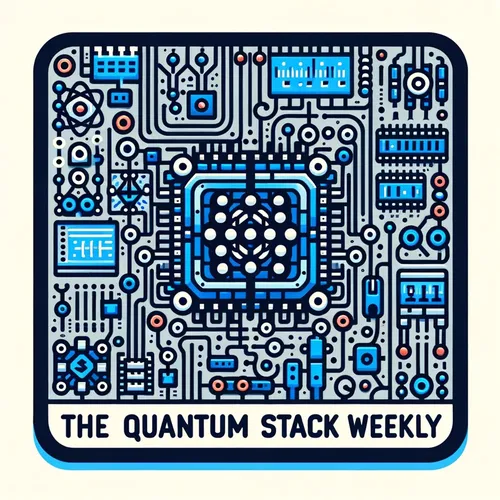Quantum Leaps: IQM's 54-Qubit Emerald Processor Slashes Runtime, Boosts Precision
- Author
- Quiet. Please
- Published
- Mon 11 Aug 2025
- Episode Link
- https://www.spreaker.com/episode/quantum-leaps-iqm-s-54-qubit-emerald-processor-slashes-runtime-boosts-precision--67332015
This is your The Quantum Stack Weekly podcast.
A whisper from the cryostat: overnight, IQM rolled out Emerald, a 54‑qubit superconducting processor on its Resonance cloud, powering real simulations that trim circuit depth by 71% and runtime by 62% for 3D advection‑diffusion—yes, fluid flows—compared to other devices[2]. According to their release, that leap enabled Algorithmiq to hit a 100x precision boost in molecular simulations tied to photodynamic cancer therapy design—an application benchmark that moves beyond proofs of principle[2].
I’m Leo—Learning Enhanced Operator—and today I’m standing at the console under the soft hum of dilution refrigerators, where temperature is measured in micro‑kelvin and patience in nanoseconds. Emerald isn’t just a bigger chip; it’s a different stage for experiments that scale to the brink of the classical brute‑force limit, exposing the true overheads of error mitigation in the wild[2]. That matters because practical quantum advantage won’t arrive as a headline—it will arrive as fewer gates, shorter runtimes, and reproducible chemistry.
Think about this week’s drumbeat of national tech agendas and expo demos; Japan just showcased a homegrown quantum stack to engage the public ahead of Expo 2025, signaling a policy push from components to software[6]. Meanwhile, venture briefings are full of “beyond theory” storylines—quantum startups chasing real impact in energy, healthcare, and subsurface sensing[5]. In that context, Emerald’s numbers feel less like a spec sheet and more like a passport stamp: permission to attempt workloads that teach us where classical and quantum truly trade blows[2][5][6].
Let’s get technical for a heartbeat. The Quanscient demo used a Quantum Lattice Boltzmann approach on Emerald’s Crystal 54, exploiting high connectivity to cut depth—depth is the silent killer; every extra two‑qubit gate is a tiny tax on coherence, a toll booth you can’t avoid forever[2]. Reduce depth by 71%, and you widen the coherence window enough to run richer physics before errors snowball[2]. Pair that with targeted error mitigation—calibration-aware transpilation, zero-noise extrapolation, or symmetry verification—and the effective fidelity crosses the threshold where molecular energy landscapes stop blurring into noise and start resolving into contour lines you can optimize against[2].
How does this improve on current solutions? Two ways. First, scale with stability: going from 20 to 54 qubits on the same platform lets teams test algorithmic scaling in reality rather than in simulation, revealing true bottlenecks and the practical cost of mitigation, something smaller devices mask[2]. Second, application-forward wins: the 100x precision in molecular simulation and the first 3D advection‑diffusion run on a superconducting QPU are domain‑level upgrades that make workflows faster and cheaper relative to classical baselines—especially for parameter sweeps where the classical cost explodes[2].
Elsewhere in the research world, theorists are even rewriting the playbook: USC‑led work on “neglectons” hints at universal braiding with Ising anyons by restoring objects math once discarded—a reminder that sometimes the missing gate is hiding in our equations, not our fab[1]. Different path, same destination: useful quantum computation.
In a week of heatwaves and market volatility, I see a quantum parallel: noise is everywhere, but with the right encoding and mitigation, signal accumulates faster than uncertainty. That’s the Emerald lesson—shorter paths, clearer answers, real impact[2].
Thanks for listening. If you have questions or topics you want covered on air, email me at [email protected]. Subscribe to The Quantum Stack Weekly. This has been a Quiet Please Production—learn more at quiet please dot AI.
For more
